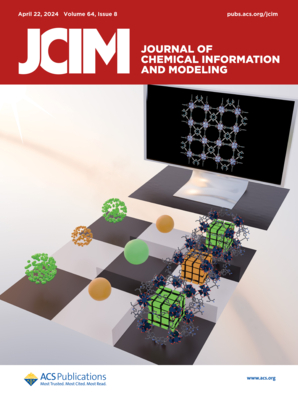通过EphA2靶向胶质母细胞瘤干细胞:RNA适体A40s用于精确治疗的结构见解
IF 5.3
2区 化学
Q1 CHEMISTRY, MEDICINAL
引用次数: 0
摘要
EphA2受体酪氨酸激酶在许多实体肿瘤中过表达,是肿瘤发生和转移的关键驱动因素。它在多形性胶质母细胞瘤(成人中最具侵袭性的脑肿瘤)及其干细胞(胶质母细胞瘤干细胞(GSCs))中高度表达,导致治疗抵抗和肿瘤复发。在之前的研究中,我们使用了系统进化配体通过指数富集(SELEX)程序,这是一种通过迭代选择和扩增来选择特定靶标的高亲和力核酸的方法,鉴定了2'-氟化epha2靶向RNA适体A40L和截断的30-mer衍生物A40s。两种适体结合EphA2后都能抑制GSC的生长、干性和迁移。本文通过计算和实验相结合的方法,揭示了A40s的结构,并研究了其与EphA2的相互作用。我们的模型为加速优化A40s变体的开发提供了蓝图,推进了下一代epha2靶向抗癌治疗。本文章由计算机程序翻译,如有差异,请以英文原文为准。
Targeting Glioblastoma Stem Cells via EphA2: Structural Insights into the RNA Aptamer A40s for Precision Therapy.
EphA2 receptor tyrosine kinase is overexpressed in many solid tumors and serves as a key driver of tumorigenesis and metastasis. It is highly expressed in glioblastoma multiforme, the most aggressive brain tumor in adults, and in its stem cells [glioblastoma stem cells (GSCs)], which contribute to treatment resistance and tumor relapse. In a previous study, we used the Systematic Evolution of Ligands by Exponential Enrichment (SELEX) procedure, a method for selecting high-affinity nucleic acids to specific targets via iterative selection and amplification, to identify the 2'-fluorinated EphA2-targeting RNA aptamer A40L and a truncated 30-mer derivative, A40s. Both aptamers were able to inhibit GSC growth, stemness, and migration upon EphA2 binding. Here, by integrating computational and experimental methods, the A40s structure was unraveled and its interaction with EphA2 was investigated. Our model offers a blueprint to accelerate the development of optimized A40s variants, advancing next-generation EphA2-targeted anticancer therapies.
求助全文
通过发布文献求助,成功后即可免费获取论文全文。
去求助
来源期刊
CiteScore
9.80
自引率
10.70%
发文量
529
审稿时长
1.4 months
期刊介绍:
The Journal of Chemical Information and Modeling publishes papers reporting new methodology and/or important applications in the fields of chemical informatics and molecular modeling. Specific topics include the representation and computer-based searching of chemical databases, molecular modeling, computer-aided molecular design of new materials, catalysts, or ligands, development of new computational methods or efficient algorithms for chemical software, and biopharmaceutical chemistry including analyses of biological activity and other issues related to drug discovery.
Astute chemists, computer scientists, and information specialists look to this monthly’s insightful research studies, programming innovations, and software reviews to keep current with advances in this integral, multidisciplinary field.
As a subscriber you’ll stay abreast of database search systems, use of graph theory in chemical problems, substructure search systems, pattern recognition and clustering, analysis of chemical and physical data, molecular modeling, graphics and natural language interfaces, bibliometric and citation analysis, and synthesis design and reactions databases.

 求助内容:
求助内容: 应助结果提醒方式:
应助结果提醒方式:


